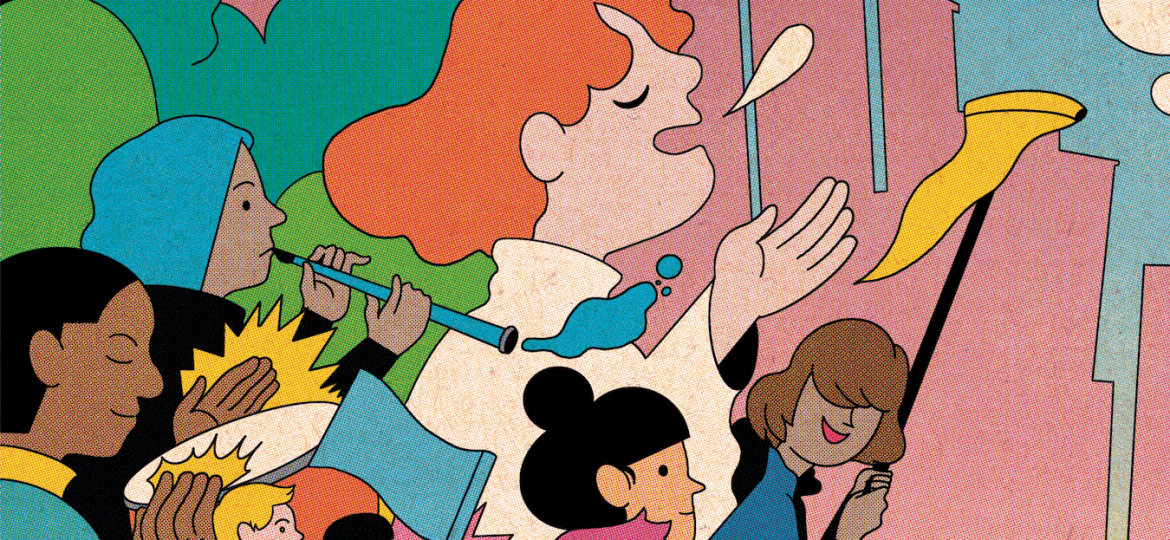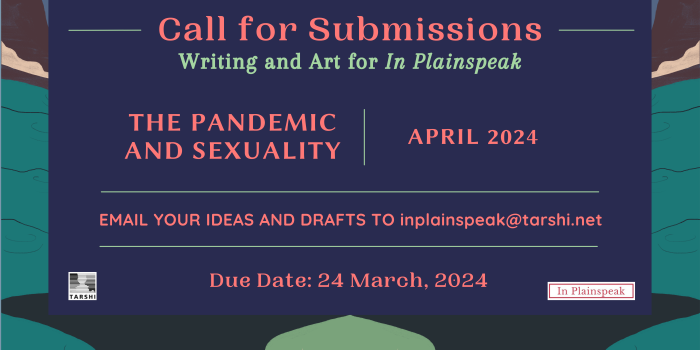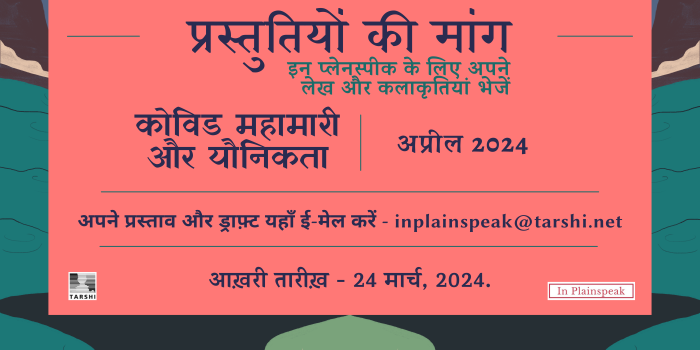
Entertainment entertains – it keeps us amused and interested and gives us something to occupy our minds with, be it a film, a TV show, a book or social media. Entertainment also educates, influences, informs, and moulds social attitudes and acceptance. Think street theatre, silent movies, Charlie Chaplin, radio shows, and the strong political messages therein. Technological leaps have taken us from the radio, newspaper and TV to cellphones, social media, streaming channels and so on, creating a world that is in constant and instant connection. So much power and so much reach can be used as a force for good or for its opposite. In this February issue of In Plainspeak we get perspectives from creators as well as consumers of entertainment. Let’s start with the former.
Prarthana Prasad aka Short Haired Brown Queer is a content creator who delivers strong messages about challenging sexual and gender norms by mixing the funny with the real in a manner that people can readily relate to. In her usual simple, down-to-earth style, Prarthana speaks with Shikha Aleya about tokenism vs real inclusion, the ethics of entertainment and creating content, her experience of growing up queer and what to keep in mind before coming out. Plus, the real reason she became an entertainer, “I became funny just to get my pretty girl crush to laugh and smile.” Well, Prarthana gets us all to laugh and smile, and does it mainly through first-person accounts.
Maybe that is what makes for an instant connection – a first-person account. Nishit Saran made Summer in my Veins in 1999, one of the earliest first-person coming out documentary films by an Indian artist. The film went on to win many awards and is his best known work. Nishit was killed in a road accident in 2002. Parth Pant, in a labour of love and homage to an iconoclast, reveals Nishit’s brilliance and political perspicacity not just as a film-maker but also as a writer and activist, through his other works and writings that have been largely forgotten, and through interviews with Nishit’s family, friends and colleagues.
Moving from creators to consumers, Ayushi Dubey explores the realms of the watcher, the performer and the performance through a set of co-joined poems. Aashi Singh reviews the Netflix series Heartstopper and its representation of the a-spec (asexual and/or aromantic spectrum) community and concludes that it is a “gift wrapped in rainbow paper”. Obviously, not all forms of entertainment are gifts and neither can we expect them to be. As many have observed, social media can be anything but ‘social’. Nidhi Chaudhary succinctly tells us about her experience of the paradox of social media.
In Hindi, Mohd Rameez Raza and Firdoush Khan write about the importance of comprehensive sexuality education, focusing on how entertainment and media can certainly be important tools for it but cannot entirely replace it. We also have translations of two articles into Hindi. First, Jessica Chandras’ article on how Bollywood films that we may view as inconsequential entertainment carry messages of sexuality, gender, morality, nationalism, class, etc. And second, Sheena D’Lima’s review of the book Erotic Stories for Punjabi Widows that revels in the subversive power of telling stories.
That’s it from us for now. Travel wisely with the stories you are told and the ones you create, tell, and re-tell.
In our second issue on the theme of Entertainment and Sexuality for March, Malavika Krishna Kumar asks what constitutes a queer narrative. Obviously, just having a queer character is not enough if the storyline follows the cis-heterosexual norm. Examining the popular visual media landscape, Malavika celebrates how queer narratives explore the in-betweens and grey areas of sexuality, gender, relationships, and human nature in general. They make us see differently; they go against the grain; they put a wobble in the regular order of things. As Malavika says, “Just as I have always been queer in more ways than one – queer as in gay but also as in weird – what’s not to say that the queering of a story can’t have as many shades of meaning within it?” Truly a case of queer stories for queer people.
Indian cinema is trying to catch up and go beyond the usual girl-boy romance offerings. Taarina Therese Chandiramani writes about the evolution of the representation of LBGTQ+ issues in Hindi cinema with queer characters no longer being depicted as caricatures but as complex individuals with feelings, relationships and rights. However, in the larger scheme of things, it feels like one step forward and two steps backward. Aditi Mishra bemoans how Hindi movies, including recent ones, not only unquestioningly portray unequal power dynamics prevalent in society but also often exaggerate and even normalize violence. She ends on a happy note, though, by telling us about a few films that have inspired her and encouraged her to explore her own hitherto unexpressed emotions and vulnerabilities.
It is our vulnerabilities that make us human and saturate the colours of our life. Trijita Mukherjee reviews the 2022 film Joyland to find that it “revels in the complexities of desire and embraces the jumbled mess that individuals and relationships become.” Makes one want to run to watch it, right?
While there are movies one wants to run to watch there are others that people want to run away from. See what the folks at TARSHI have to say about two films that (almost) everyone is talking about.
From movies we move to music. Vishal Ranjan takes us to the bawdy humour of North Indian wedding songs that serve to diffuse tensions and also act as a channel for the expression of sexuality. Chandan Jyoti Konwar tells us about how David Bowie’s iconic response “They’re shoe shoes, silly!” led him to use hip-hop to collaboratively create socially conscious music to amplify the voices of the LBGTQIA+ community in Assam.
Shruti Sharma, in a poem about how reality lies within the webs of fantasy that entertainment weaves, reminds us that we are both audience and star.
To spice up our offerings to you, dear readers, we are introducing a new feature – Quick Bytes – short responses to cue questions. See what our respondent Vikramjeet Sinha has to say here. And for some further spice, meet the woman who is helping Bollywood have better sex, in our Video Corner.
In Hindi, we bring you a translation of Syed Saad Ahmad’s article on Rekhti, a genre of Urdu poetry that celebrates women’s relationships, everyday activities and preoccupations.
That’s it from us, until next time. Go gently, go well.


Cover Image: Artwork by Mark Wang for OBI x Fine Acts.